Related Research Articles

The history of painting reaches back in time to artifacts and artwork created by pre-historic artists, and spans all cultures. It represents a continuous, though periodically disrupted, tradition from Antiquity. Across cultures, continents, and millennia, the history of painting consists of an ongoing river of creativity that continues into the 21st century. Until the early 20th century it relied primarily on representational, religious and classical motifs, after which time more purely abstract and conceptual approaches gained favor.

Jean-François Millet was a French artist and one of the founders of the Barbizon school in rural France. Millet is noted for his paintings of peasant farmers and can be categorized as part of the Realism art movement. Toward the end of his career, he became increasingly interested in painting pure landscapes. He is known best for his oil paintings but is also noted for his pastels, Conté crayon drawings, and etchings.
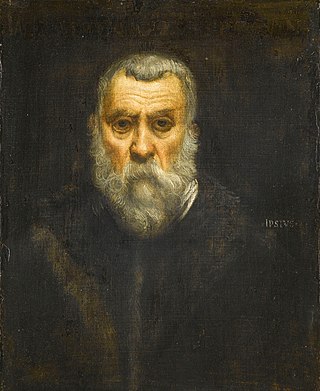
Jacopo Robusti, best known as Tintoretto, was an Italian Renaissance painter of the Venetian school. His contemporaries both admired and criticized the speed with which he painted, and the unprecedented boldness of his brushwork. For his phenomenal energy in painting he was termed il Furioso. His work is characterised by his muscular figures, dramatic gestures and bold use of perspective, in the Mannerist style.

Jean-Louis André Théodore Géricault was a French painter and lithographer, whose best-known painting is The Raft of the Medusa. Despite his short life, he was one of the pioneers of the Romantic movement.

David Teniers the Younger or David Teniers II was a Flemish Baroque painter, printmaker, draughtsman, miniaturist painter, staffage painter, copyist and art curator. He was an extremely versatile artist known for his prolific output. He was an innovator in a wide range of genres such as history painting, genre painting, landscape painting, portrait and still life. He is now best remembered as the leading Flemish genre painter of his day. Teniers is particularly known for developing the peasant genre, the tavern scene, pictures of collections and scenes with alchemists and physicians.

Valentin Alexandrovich Serov was a Russian painter and one of the premier portrait artists of his era.
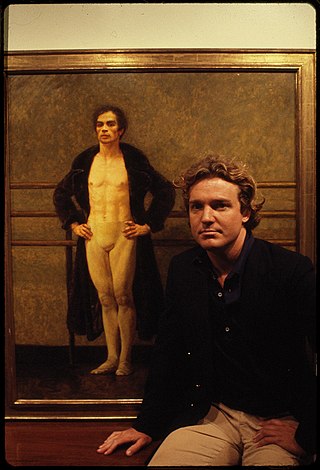
James Browning Wyeth is an American realist painter, son of Andrew Wyeth, and grandson of N.C. Wyeth. He was raised in Chadds Ford Township, Pennsylvania, and is artistic heir to the Brandywine School tradition — painters who worked in the rural Brandywine River area of Delaware and Pennsylvania, portraying its people, animals, and landscape.

Mughal painting is a South Asian style of painting on paper confined to miniatures either as book illustrations or as single works to be kept in albums (muraqqa), originating from the territory of the Mughal Empire in the Indian subcontinent. It emerged from Persian miniature painting and developed in the court of the Mughal Empire of the 16th to 18th centuries. Battles, legendary stories, hunting scenes, wildlife, royal life, mythology, as well as other subjects have all been frequently depicted in paintings.
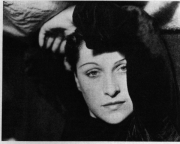
Henriette Theodora Markovitch, known as Dora Maar, was a French photographer, painter, and poet.
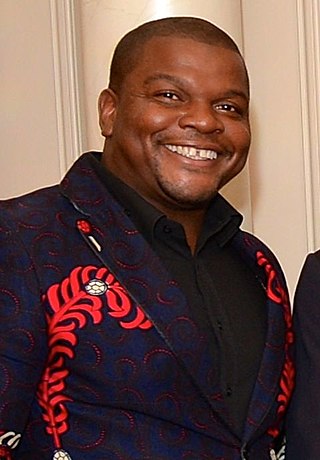
Kehinde Wiley is an American portrait painter based in New York City. He is known for his naturalistic paintings of Black people that reference the work of Old Master paintings. In 2017, Wiley was commissioned to paint former President Barack Obama's portrait for the Smithsonian National Portrait Gallery. The Columbus Museum of Art hosted an exhibition of his work in 2007 and describes his paintings as "heroic portraits which address the image and status of young African-American men in contemporary culture."

Portrait painting is a genre in painting, where the intent is to represent a specific human subject. The term 'portrait painting' can also describe the actual painted portrait. Portraitists may create their work by commission, for public and private persons, or they may be inspired by admiration or affection for the subject. Portraits often serve as important state and family records, as well as remembrances.
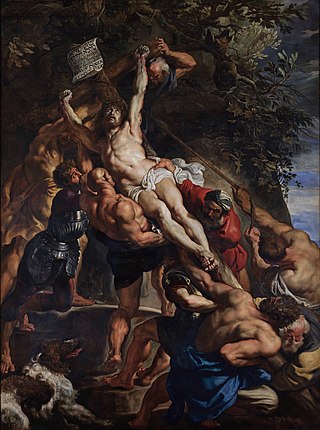
Flemish Baroque painting was a style of painting in the Southern Netherlands during Spanish control in the 16th and 17th centuries. The period roughly begins when the Dutch Republic was split from the Habsburg Spain regions to the south with the Spanish recapturing of Antwerp in 1585 and goes until about 1700, when Spanish Habsburg authority ended with the death of King Charles II. Antwerp, home to the prominent artists Peter Paul Rubens, Anthony van Dyck, and Jacob Jordaens, was the artistic nexus, while other notable cities include Brussels and Ghent.

Horace Day, also Horace Talmage Day, was an American painter of the American scene who came to maturity during the Thirties and was active as a painter over the next 50 years. He traveled widely in the United States and continued to explore throughout his life subjects that first captured his attention as an artist in the Thirties. He gained early recognition for his portraits and landscapes, particularly his paintings in the Carolina Lowcountry.

Marine art was especially popular in Britain during the Romantic Era, and taken up readily by British artists in part because of Great Britain's geographical form. This article deals with marine art as a specialized genre practised by artists who did little or nothing else, and does not cover the marine works of the leading painters of the period, such as, and above all, J. M. W. Turner. The tradition of British marine art as a specialized genre with a strong emphasis on the shipping depicted began in large part with the artists Willem Van de Velde the Elder and his son, called the Younger in the early 18th century. The Van Veldes, originally from Holland, moved to England to work for King Charles II). By the 17th century, marine art was commissioned mostly by merchant seamen and naval officers and created by marine art specialists. In part, marine art served as a visual portrayal of Britain's power on the sea and as a way of historically documenting battles and the like. As British sea captains began to recognize the ability of marine artists to bring Britain's success on the sea to the public on land, some took on an active role in supporting this type of artwork. For example, marine artist Robert Cleveley was hired by Captain William Locker to work in HMS Thames as a clerk, and Captain Locker, interested in employing artists, is believed to have played a significant role in encouraging Cleveley to work as a marine painter. Captains would act as marine artists' patrons, commissioning them to paint portraits of themselves and pictures depicting important battles. A few significant marine artists who were supported in this way by naval officers are Nicholas Pocock, Thomas Luny, and George Chambers. William Hodges, for example, who was trained to draw at William Shipley's Academy, was hired by the Admiralty to finish his pictures from Cook's 1772 voyage for publication upon reaching home in 1775. Captains also commissioned artists to paint portraits of their ships.
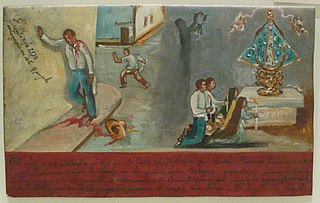
Votive paintings in Mexico go by several names in Spanish such as “ex voto,” “retablo” or “lámina,” which refer to their purpose, place often found, or material from which they are traditionally made respectively. The painting of religious images to give thanks for a miracle or favour received in this country is part of a long tradition of such in the world. The offering of such items has more immediate precedence in both the Mesoamerican and European lines of Mexican culture, but the form that most votive paintings take from the colonial period to the present was brought to Mexico by the Spanish. As in Europe, votive paintings began as static images of saints or other religious figures which were then donated to a church. Later, narrative images, telling the personal story of a miracle or favor received appeared. These paintings were first produced by the wealthy and often on canvas; however, as sheets of tin became affordable, lower classes began to have these painted on this medium. The narrative version on metal sheets is now the traditional and representative form of votive paintings, although modern works can be executed on paper or any other medium.

Visual arts in Israel or Israeli art refers to visual art or plastic art created by Israeli artists or Jewish painters in the Yishuv. Visual art in Israel encompasses a wide spectrum of techniques, styles and themes reflecting a dialogue with Jewish art throughout the ages and attempts to formulate a national identity.

Itshak Jack Holtz was a Polish-born and an Israeli and American Orthodox Jewish painter, who is best known for his paintings and drawings that depict traditional scenes of Jewish life.

Stephanie Deshpande is a contemporary American painter, best known for her portraits and narrative paintings. She currently lives in northern New Jersey.

Candaules, King of Lydia, Shews his Wife by Stealth to Gyges, One of his Ministers, as She Goes to Bed, rarely known as The Imprudence of Candaules, is a 45.1 by 55.9 cm oil painting on canvas by English artist William Etty, first exhibited at the Royal Academy in 1830. It shows a scene from the Histories by Herodotus, in which Candaules, king of Lydia, invites his bodyguard Gyges to hide in the couple's bedroom and watch his wife Nyssia undress, to prove to him her beauty. Nyssia notices Gyges spying and challenges him to either accept his own execution or to kill Candaules as a punishment. Gyges chooses to kill Candaules and take his place as king. The painting shows the moment at which Nyssia, still unaware that she is being watched by anyone other than her husband, removes the last of her clothes.

The Passage of the Delaware is a large, Neoclassical 1819 oil-on-canvas painting by Thomas Sully. With attention to historical accuracy, the painting depicts George Washington on horseback observing the troops of the American Revolutionary Army in the process of crossing the Delaware River prior to the surprise attack on Hessian troops on the night of December 25 and 26, 1776, at the Battle of Trenton. The image is intended to capture the moment prior to George Washington dismounting his horse and joining his army in crossing the Delaware River.
References
- ↑ "Charleston portrait project pays tribute to Emanuel 9". 2016 Media General Communications Holdings, LLC. News2. May 28, 2016. Retrieved 28 February 2017.